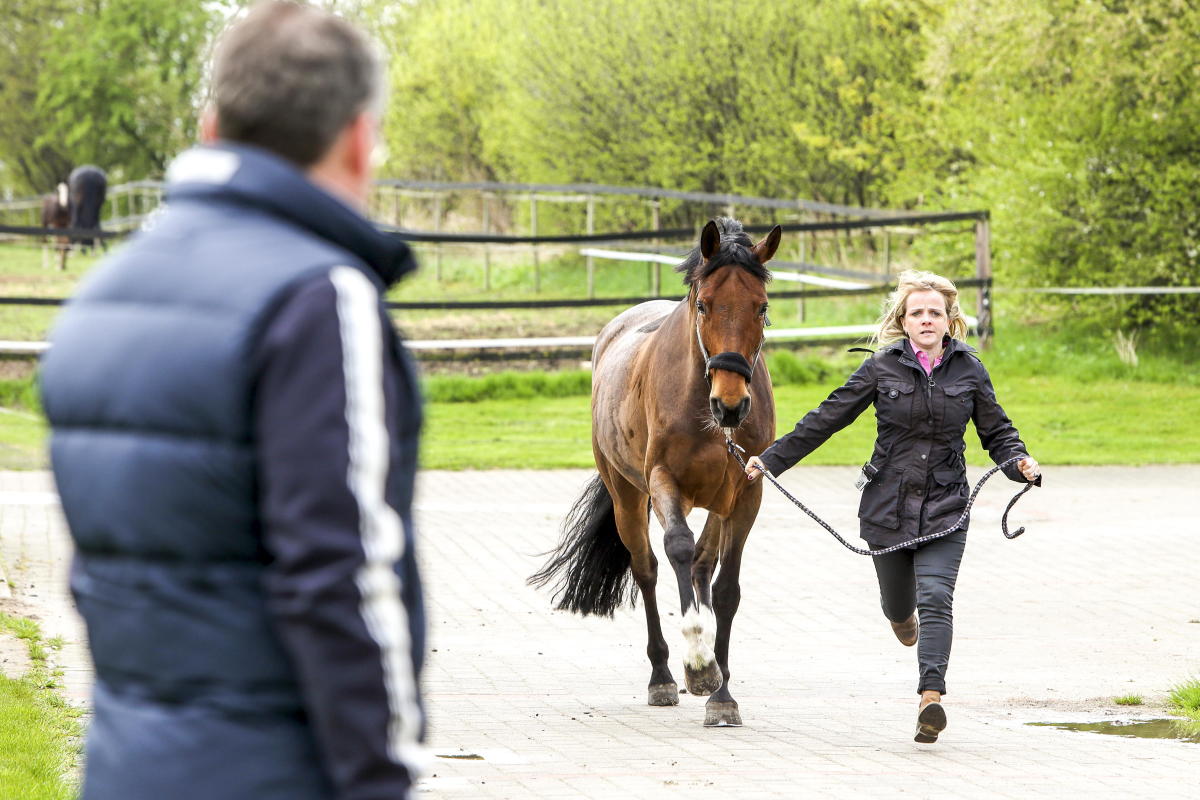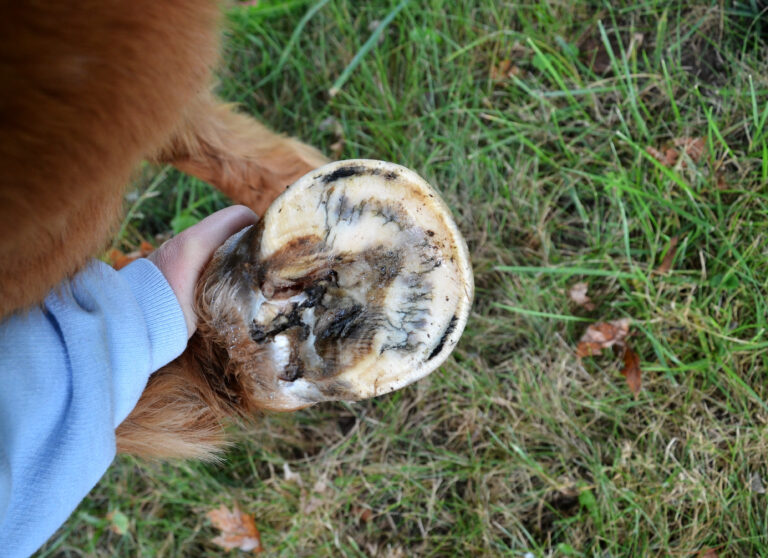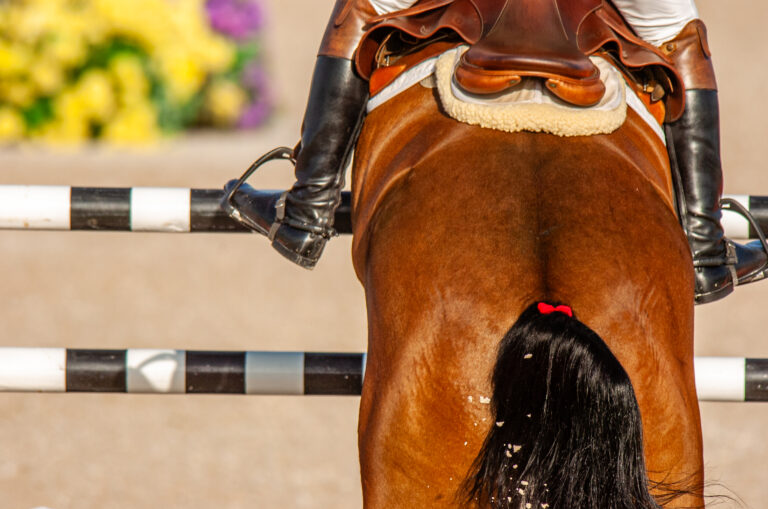Q: What is a preventive performance exam, and how do I know if my horse needs one?
A: Routine preventive examinations are critical to maintain the health and soundness of a performance horse. These exams are similar to regular maintenance appointments for cars—it is a check over the major systems. For your horse, a routine soundness evaluation once or twice a year is a priceless, proactive strategy to keep him feeling his best and will help minimize the chance of lameness and the accompanying downtime.

Frank Sorge/arnd.nl
An Overview
A preventive performance examination can be an all-encompassing evaluation of your horse, though it can differ from veterinarian to veterinarian. Though there is certainly a focus on evaluating the musculoskeletal system, it is also a great opportunity to review other important aspects of a horse’s health, like the vaccination program, shoeing or diet. After listening to your review of your horse’s performance, your veterinarian may suggest additional diagnostic tests. For example, if there’s a complaint of recent weight loss and poor performance in the show ring, your veterinarian might suggest a gastroscopy to rule out gastric ulcers. Or perhaps it’s time to evaluate baseline bloodwork to screen for an endocrine disease in an older horse.
Components of the Preventive Performance Examination
The foundation of a preventive performance examination is a complete physical examination. The veterinarian carefully palpates the legs, neck and topline, feeling for areas of pain or tension in the musculature, or heat and swelling in a tendon. Palpation of the joints can reveal changes in bone contour (remodeling) or increased fluid content (effusion). This also provides the opportunity for you to share valuable background information to guide your veterinarian’s assessment. For example, it would be normal to have thickening over an area of previous injury, but maybe there is tendon sheath swelling that is a new concern.
After the veterinarian performs a static examination of the horse (standing still), his movement is evaluated. This can include movement in hand over a variety of surfaces (hard and softer arena footing), as well as under saddle. Flexion tests of each limb help assess for subclinical (not-yet evident) lameness. In a flexion test, the veterinarian passively flexes a portion of the horse’s limb for 30-60 seconds. This stresses the horse’s soft tissue and joint structures in a particular region. Then the horse is asked to trot off and that limb is evaluated for increased lameness or change in movement. Nerve blocks may be necessary if there is an evident baseline lameness. Here, the veterinarian sequentially anesthetizes portions of the limb to identify which region is painful. Then, diagnostic imaging such as radiographs and ultrasound is performed to identify the source of the lameness.
When and Where to Schedule
Another common question is when to schedule this type of examination. There are times in a horse’s career when it’s logical to take a step back and check in on his overall wellness—for example, after transitioning into a new training program, or before a competition cycle. For horses in consistent year-round training programs, semi-annual examinations make sense, especially in the older horse or harder-training individuals. Some indications that it might be a good time to schedule such an exam include a change in your horse’s consistency in his training; for example, sudden difficulty with one lead change can be a tip-off that something is amiss.
In most cases, this comprehensive examination can take place in your horse’s normal stable environment. We are lucky that technology has adapted to sporthorse veterinarians’ needs to be ambulatory, but still some features of a clinic remain irreplaceable. The advantages of a clinic setting include cleanliness, the presence of a safer workspace and immediate access to imaging equipment. As regenerative medicine expands, a clinic setting provides direct access to the laboratory equipment needed to manufacture biologic-based therapies such as platelet-rich plasma (PRP) for our equine athletes. However, there are advantages as well to evaluations done on the farm such as access to an arena, and less excitement or stress because of a change of venue, which can influence the results of the examination. In the end it may be a combination that works best—evaluate at the farm, then regroup at a clinic for further investigation and treatment if necessary.
As a result of this examination, your veterinarian may recommend therapies such as joint injections or shockwave, consult your farrier to change the shoeing setup or even uncover a subclinical tendon or ligament injury that requires a modification in the level of exercise. At first, the information gained may be intimidating for an owner, but the end result is a curated long-term management and therapeutic plan for your horse to support a long, successful partnership.
About Cricket Russillo
Christina “Cricket” Russillo, DVM, graduated from the Tufts University School of Veterinary Medicine in 2001. After completing a large animal medicine and surgery internship at Texas A&M, she realized her desire was to work on elite sporthorses. Following 13 years of practice at Fairfield Equine Associates in Newtown, Connecticut, focused on high-level show-jumping and dressage horses, she joined Virginia Equine Imaging in 2015. Russillo relocates to Florida every winter to support her clients and patients. She has competed through Third Level in dressage and in February 2017 she was appointed the U.S. Dressage Team veterinarian. She is also a certified member of the International Society of Equine Locomotor Pathology.











